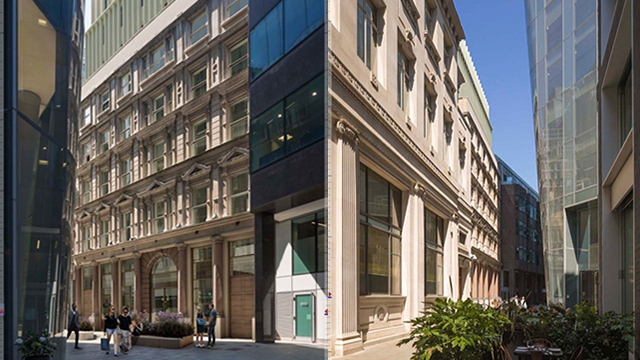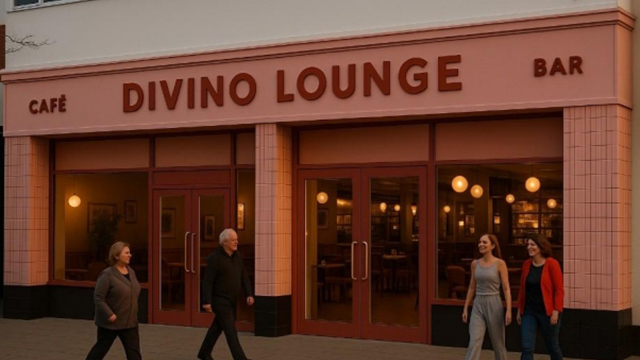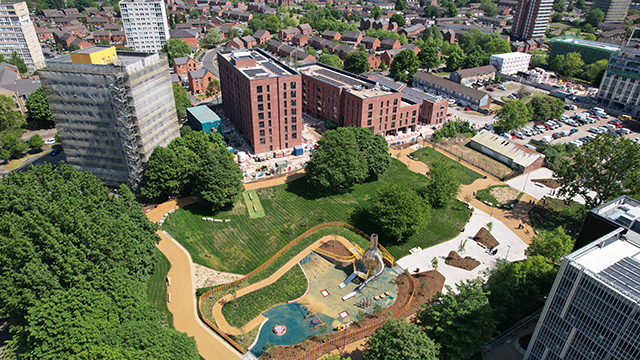Two London boroughs, just 10 miles apart, both with ambitious regeneration plans and both being heavily plugged by London mayor Boris Johnson in his re-election campaign; that is where the similarities between Croydon and Bromley end.
Bromley is one of the most affluent boroughs in London, ranking high in quality-of-life surveys. The council has an Area Action Plan in place, a town centre developer with funding, planning applications in for major schemes and occupiers lined up.
Croydon has a 10-year history of blighted regeneration schemes, has just lost both its head of regeneration and its star employer, Nestlé (see offices feature, p68), and last year had its already tarnished reputation further marred by becoming the town most associated with the riots. Unfortunately, and maybe unfairly, it is the image of Monika Konczyk leaping to safety from the second floor window of her blazing Croydon home that many recall from those destructive nights in August.
Successive masterplans, recruitment of regeneration experts to top council positions and the creation of a £450m joint venture vehicle with John Laing to regenerate the town – including spending £145m on new council offices – have all failed to restore Croydon’s fortunes or its image.
Croydon is left with numerous empty and derelict sites, an aged office stock, some of the cheapest housing in the wider London area and all the social problems that entails. Like Bromley, Croydon has received money from Johnson’s Outer London Fund for infrastructure improvements but, as one commentator says, this is “like sticking a plaster on a broken leg”.
Frustrated by lack of progress
Local agents are frustrated by the lack of progress. Savills’ Chris Kempton, who recently relocated from Croydon to Bromley, says: “Croydon has all the ingredients for regeneration, it’s just that the council and developers can’t seem to get together and bake the cake.”
Some things are looking up for Croydon. Hammerson’s acquisition of the Centrale shopping centre in March 2011 promises to give the town’s retail core the kind of makeover the REIT achieved in Birmingham and Bristol.
Croydon has long since plummeted out of the UK’s top 10 retail destinations, in part because of the council’s failed development agreement with Minerva for a 1m sq ft retail scheme known as Park Place. That collapsed in March 2009, leaving the St George’s Walk precinct and much of the surrounding area derelict.
Hammerson’s ambitions are to extend its redevelopment into the area around Centrale, including the adjacent Whitgift centre. With bleak inevitability, these plans may have been thwarted because one of Whitgift’s owners announced in January that it was planning to grant development rights to Australian property group Westfield.
Boris Johnson, who draws much of his support from the London boroughs, rejoiced at Westfield’s arrival in Croydon, anticipating the kind of panache the Australian developer demonstrated at Stratford and White City. But the Whitgift Foundation controls only 25% of the centre and its fellow landowners, furious they were not consulted, have set out to recruit a developer of their own.
Westfield has been tight-lipped on plans, but many doubt it will stay the course. Westfield’s success in the UK has been on uncomplicated sites and the developer recently sold the Broadmarsh shopping centre in Nottingham, which it had held and failed to redevelop for 11 years, to Capital Shopping Centres.
Westfield’s failure to see out a protracted CPO process in Nottingham suggests it may not have the stomach to stay around while Whitgift’s owners fight it out. Hammerson is committed to spending £50m redeveloping the retail centre and believes it holds an ace card with John Lewis, which has made no secret of its wish to open a department store in a regenerated Croydon.
“We are John Lewis’s largest landlord; we have always worked closely with it and are always looking at future opportunities,” says Hammerson’s retail managing director, Lawrence Hutchings. “We are aware that John Lewis has an interest in Croydon, but it wants to see the right scheme and the right owner/developer, and that would be us.”
The pattern of raised hopes followed by collapse have dogged Croydon for the past decade. Critics blame the council for being overambitious and for entering into unwise partnerships with developers.
CSC, which owns the popular Glades retail mall in Bromley, was one of the names aired as a possible developer for the Whitgift Centre, but CSC’s director of asset management, Jonathan Ainsley, is unenthusiastic.
Transport links in place
“I think at the moment nobody is very clear about where Croydon is heading,” he says. “The fact that Bromley has got its AAP in place means it is able go out and sell to developers. Bromley’s transport links are in place and, unlike Croydon, it doesn’t have four or five different ownerships vying for position.”
CSC has just submitted a planning application to extend the Glades with a 15,000 sq ft catering wing, which is already fully prelet. Meanwhile, Cathedral Group has a planning application in to redevelop a Bromley council-owned car park as an £80m scheme, including a multiplex cinema, a 100-bedroom hotel, cafes and restaurants, and around 200 residential units.
But not all things have gone Bromley’s way. Linden Homes recently won a high court ruling overturning part of the AAP, which had restricted the number of residential units on a site it owned near Bromley North Station to 250.
Bromley sees the site as providing a “northern gateway” into the town centre and had allocated it for a mixed-use scheme, including 22,000 sq ft of business development and 10,000 sq ft for community use.
Linden argued that the scheme, with just 250 residential units, was unviable, but Bromley chose to defend the AAP all the way to the high court.
Inevitably, this has left relations between the two sides rather prickly, although Linden says it hopes to continue with the scheme. “We still want to work in partnership with Bromley and are trying to see a path through,” says Linden’s South East managing director Steve Bangs.
“Obviously, we are complying with what the judge ruled,” says a spokesman for Bromley council, refusing to be drawn on whether the council felt any need to rebuild bridges with Linden.
BROMLEY
Churchill Place 200,000 sq ft of retail and more than 1,000 residential units. Bromley council is seeking a development partner for the nine-acre site, which is situated to the west of the high street.
Westmoreland Road nine-screen multiplex cinema, 100-bedroom hotel and 200 residential units. Cathedral Group has lined up Vue Cinemas for the multiplex.
Bromley North refurbishment of the railway station and bus interchange; new public space and housing. A long-term objective is to link with the Docklands Light Railway.
Old Town Hall and South Street car park 150-bedroom hotel and conference facility, and 20 homes planned with The Land Group.
Bromley South station refurbishment
Old Crown buildings 100-bedroom hotel and new offices for the Royal Bank of Scotland.
CROYDON
West Croydon public realm improvements and redevelopment of the railway station.
Mid-Croydon new mixed-use “neighbourhoods”; town square to the north of the town hall and between The Queen’s Gardens and Park Street. The council’s new “public service delivery hub” (office development) is under construction on Fell Road in the mid-Croydon area, which includes the site of the failed Park Place scheme.
East Croydon Ruskin Square: Stanhope/Schroders’ proposed office development; it was hoped that the scheme would attract a relocating Nestlé and help fund refurbishment of East Croydon Station.
Site of another failed council-led venture for a Gateway/Arena development by Arrowcroft.
Cherry Orchard Road residential tower and hotel (main picture) by Menta on 3.3-acre site of Croydon General Hospital, which closed in 1996. The council seeks an “integrated health/housing scheme” for the site.











